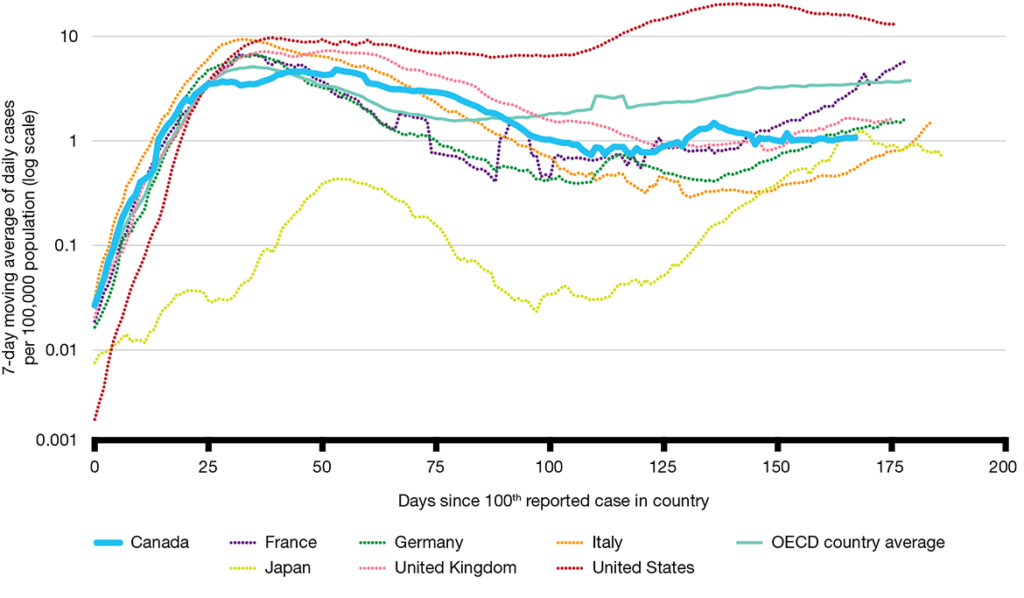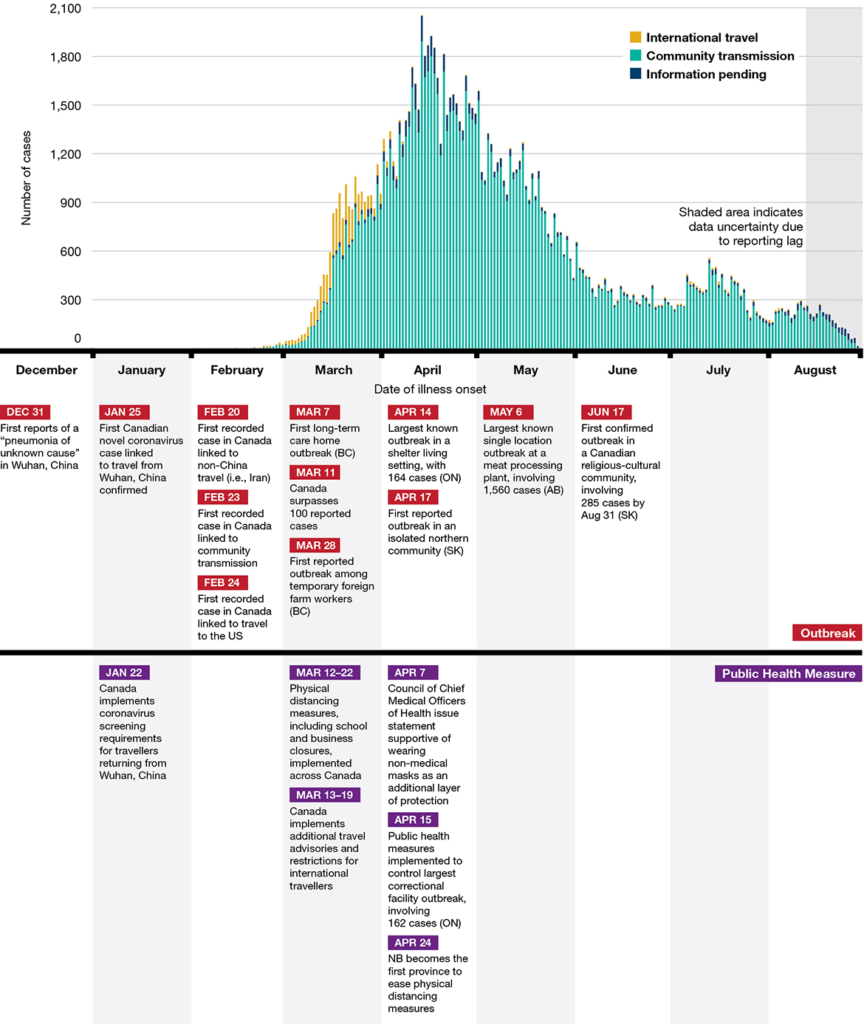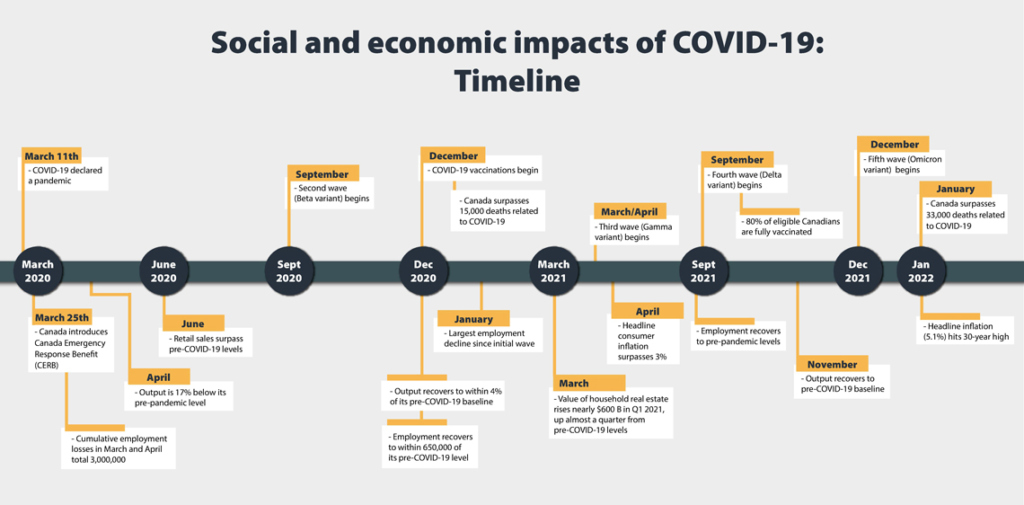What is COVID-19?
COVID-19 is an illness caused by a virus. The virus is called severe acute respiratory syndrome coronavirus 2, commonly known as SARS-CoV-2. The first few cases of the illness began spreading in late 2019, and in early 2020, COVID-19 became a global pandemic (1). (Image: CDC, 2024)
Common symptoms of the illness include fever, chills, and sore throat. Most people fully recover on their own without requiring hospitalization, however certain populations (older adults over the age of 60, immunocompromised, with existing medical conditions, unvaccinated) are more vulnerable (2).
According to the WHO (World Health Organization), “Over 760 million cases and 6.9 million deaths have been recorded worldwide since December 2019, but the actual number is thought to be higher” (3).
Zoonotic Origins of SARS-CoV-2
Research suggests that SARS-CoV-2 (the virus responsible for COVID-19) emerged from an animal source - coronaviruses in Horseshoe Bats (Rhinolophus bat) (4). Human contact with bats has increased as human population centers encroach on bat habitats (5). Continuous research on the zoonotic origins of COVID-19 include further developments looking at genomic evidence on a genetic level and studying past patterns of past coronavirus outbreaks.
Variants:
Alpha, beta, gamma, delta and omicron are the five strains of mutated COVID-19 viruses. By mid-2020, the D614G spike mutation had become dominant globally. Soon after, the alpha variant was discovered in the United Kingdom. Further mutations were discovered soon after, with beta being discovered in South Africa (December 2020), gamma being discovered in Brazil (January 2021), delta being discovered in the India (late 2020), and omicron being discovered in South Africa and Botswana (Nov 2021) (6).
The discovery and response towards these mutated variants was of high significance as these mutations may lead to enhanced infectivity, transmissibility, changed response to vaccination, and increased difficulty with diagnosis on molecular diagnostic tests (7).
Global Timeline and Response to COVID-19
On Mar 11, 2020, the WHO declared COVID-19 a pandemic. Located below is a brief global timeline of events and response to COVID-19.. Information was obtained from the CDC Museum COVID-19 Timeline and Canadian COVID-19 Intervention Timeline (8,9).
Dec 2019-Feb 2020
- December 12, 2019: Wuhan, Hubei, China, patients being exhibiting an atypical pneumonia-like illness that doesn’t respond well to standard treatments (7)
- December 31, 2019: WHO is informed, initial cases connected to Huanan Seafood Wholesome Market. The market is soon closed.
- January 7 2020: Public health officials in China identify a novel coronavirus as the causative agent of the outbreak.
- WHO begins using the phrase “2019 Novel Coronavirus” or “2019-nCoV”
- CDC reports the first laboratory-confirmed case of the 2019 Novel Coronavirus in the U.S.
- Lockdown in Wuhan, China
- The first COVID-19 case in Canada was reported on January 25, 2020.
March 11, 2020
- After more than 118,000 cases in 114 countries and 4,291 deaths, the WHO declares COVID-19 a pandemic.
Mar-Nov, 2020
- Lockdowns, social distancing, curfews, masking, stay-at-home orders and other non-pharmaceutical interventions in place globally to reduce transmission.
- Development of COVID-19 vaccine in various clinical trial phases, including the Pfizer-BioNTech, Moderna mRNA vaccines and AstraZeneca
- In September, the reported death toll from COVID-19 reached more than 1 million worldwide— in just 10 months.
- Government financial support (e.g., Canada Emergency Response Benefit (CERB); COVID Relief Act in the U.S.) provided funding for enhanced unemployment benefits, business loans, the purchase and distribution of COVID-19 vaccines and testing kits, and direct cash payments. Unemployment rates increased drastically.
Dec 2020
- Dec 14, first COVID-19 vaccine given to an American outside of clinical trials.
- December 24, 2020: More than 1 million COVID-19 vaccine doses have been administered in the U.S. in just 10 days: healthcare workers and older adults living in long-term care facilities are the first to be vaccinated with the goal of vaccinating every person as soon as enough vaccine doses are available
2021-2022
- Different and more transmissible variants detected in various countries and regions:
- Global vaccination initiatives continued.
- March 5, 2022: More than 10 billion people have received a COVID-19 vaccine, with WHO reporting that 10,704,043,684 COVID-19 vaccine doses have been administered worldwide. About 56% of the world is now fully vaccinated.
- Many regions still lack access, especially on the African continent where less than 20% of the total population is currently vaccinated
- Mar: The number of recorded deaths due to COVID-19 surpasses 6 million worldwide, with WHO reporting 6,019,085 confirmed deaths. The true number is likely much higher.
May 5, 2023
- More than three years after COVID-19 was designated as a pandemic.
- The World Health Organization (WHO) declared an end to the global Public Health Emergency (PHE) for COVID-19.


Image: European Centre for Disease Prevention and Control. COVID-19 situation update worldwide, as of 20 August 2020. European Centre for Disease Prevention and Control (2020).
COVID-19 Pandemic Timeline: in a Canadian Context
The COVID-19 pandemic has greatly affected the world on a global scale, but has also had a profound impact on the health, social and economic well-being of people in Canada. The image below illustrates the Canadian case counts from December 2019 to August 2020, and relevant Canadian Public Health measures implemented from the Chief Public Health Officer of Canada's Report on the State of Public Health in Canada (2020).


Image: Chief Public Health Officer of Canada's Report on the State of Public Health in Canada, 2020.
Socioeconomic Impacts of COVID-19 in a Canadian Context


Image: Statistics Canada, 2022
History of Vaccine R&D
Since 2020, many COVID-19 vaccine clinical trials were (and are) in progress (10). Researchers take what was previously learned from vaccine studies of SARS-CoV, MERS-CoV and other viruses to develop vaccines that prevent COVID-19. In Canada, the regulating body towards authorizing and approving novel vaccines is Health Canada. Vaccines fall under the Food and Drugs Act, and must have clinical evidence demonstrating safety and efficacy before approval (11,12).
During the height of the pandemic, the NRC (National Research Council Canada) made investments in the domestic development of vaccine candidates. However, as further global vaccine developments ensued, the Canadian federal government later purchased vaccines being produced by AstraZeneca, Moderna, Pfizer and Janssen to administer to Canadian citizens.
Mass vaccination efforts swept across Canada following Health Canada's emergency authorization of the Pfizer–BioNTech vaccine on December 9, 2020. Soon after, Health Canada authorized the Moderna vaccine on December 23, 2020. On February 26, 2021, Health Canada authorized the Oxford–AstraZeneca vaccine for use. On February 17, 2022, Health Canada approved the Novavax vaccine, which is the first approved COVID-19 protein subunit vaccine.
References:
11. Canada H. Regulating vaccines for human use in Canada [Internet]. 2011 [cited 2025 Aug 2]. Available from: https://www.canada.ca/en/health-canada/services/drugs-health-products/biologics-radiopharmaceuticals-genetic-therapies/activities/fact-sheets/regulation-vaccines-human-canada.html
By Angela Xu
